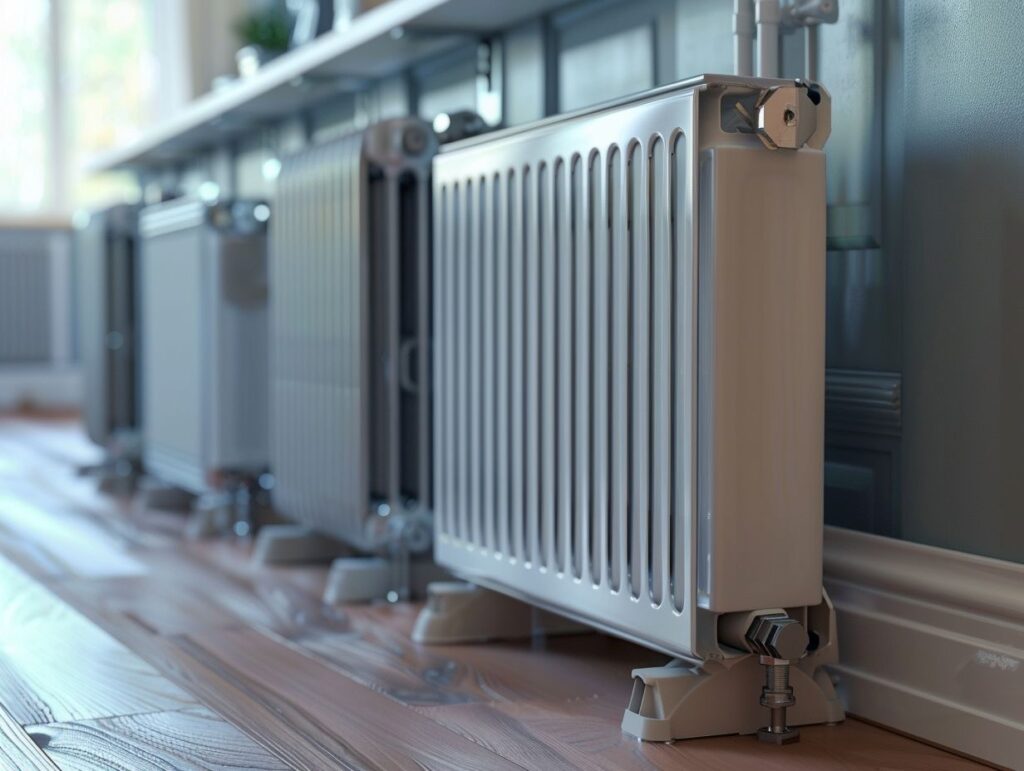If you are considering upgrading your heating system with a Type 22 radiator and are unsure where to begin, this article is designed to assist you in understanding the various radiator types available and the key factors to consider when selecting the appropriate size.
The content of this article encompasses guidance on calculating the correct size using BTU methods and expert advice on customisation options, offering you a comprehensive understanding to facilitate an informed decision-making process.
Furthermore, installation and maintenance recommendations will be provided to guarantee optimal performance. Are you prepared to commence this informative journey? Let us delve into the details.
Key Takeaways:
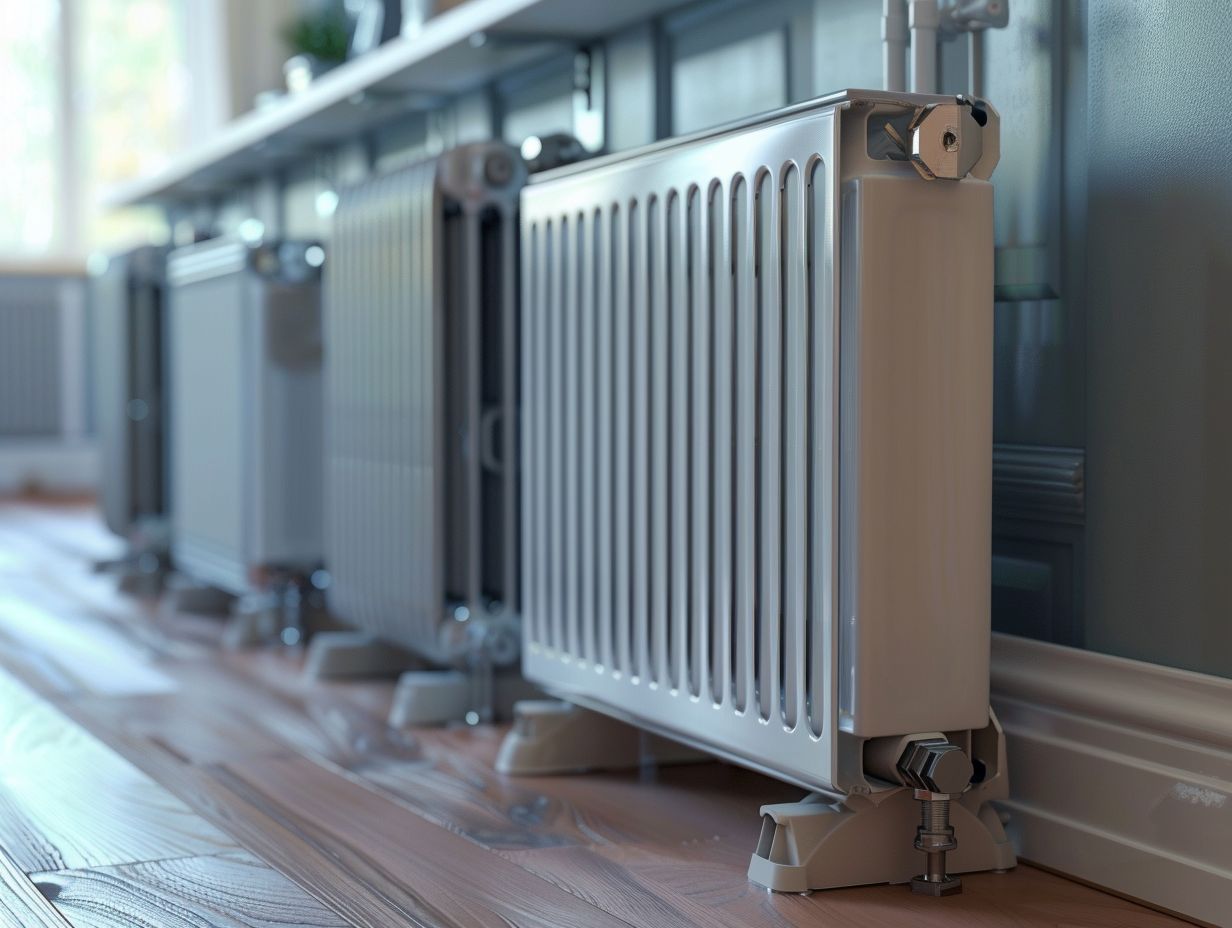
- Size matters! Consider the room size and heat output needs when choosing a Type 22 radiator.
- Don’t forget about space and installation requirements. Measure carefully and consider customisation options for a perfect fit.
- Calculate correctly using BTU method and seek expert recommendations for the best size Type 22 radiator.
Factors to Consider When Choosing a Size
When selecting the right size radiator, you need to take into account various factors, including room dimensions, required heat output, heat loss calculations, and the energy efficiency of the radiator.
Understanding U values and energy consumption is essential for optimising your heating system to achieve maximum efficiency.
The size of the room is a critical factor in determining the suitable radiator size. Larger rooms typically necessitate radiators with higher heat output capacities to adequately heat the space. The heating requirements of a room are influenced by variables such as insulation quality, windows, and overall room design.
Accurate heat loss calculations are essential to ensure that the chosen radiator can efficiently meet the heating requirements. Energy efficiency considerations are also important when assessing radiator size options, as opting for a radiator with higher efficiency can result in cost savings and a reduced environmental footprint.
Room Size and Heat Output Needs
Matching the radiator size to your room’s dimensions and heat output needs is essential for efficient heating. You must calculate the required kilowatts based on heat loss and balance radiators across different rooms to ensure a comfortable and energy-efficient heating system.
A critical factor to consider when selecting radiator sizes is the room size as it directly affects the heat distribution and overall efficiency. Larger rooms may require radiators with higher heat outputs to adequately warm the space.
Heat loss calculations play a significant role in determining the appropriate kilowatt ratings for radiators, ensuring that they can effectively heat the room without wasting energy.
Proper pipe sizing is also crucial to optimise the flow of hot water through the system, preventing any inefficiencies or uneven heating distribution.
Available Space and Installation Requirements
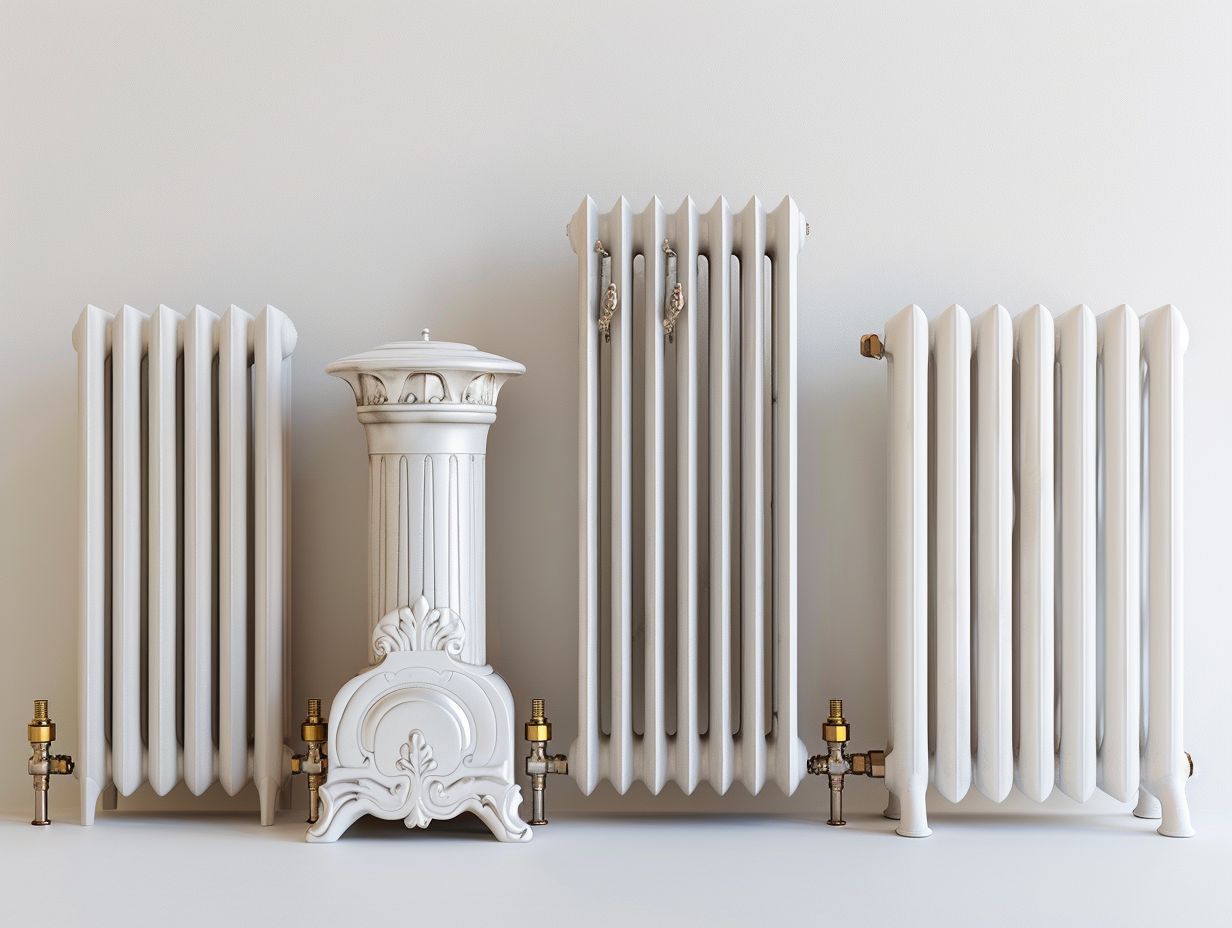
When selecting radiators for your home, it is essential to consider the available space and installation requirements. Factors such as room layout, necessary materials for installation, flow rates, and the utilisation of Thermostatic radiator valves all play a crucial role in optimising heating performance and control.
The size of the radiator is a critical factor to consider, especially in rooms with limited space. Compact and vertical radiators are popular choices for rooms with constrained dimensions as they offer efficient heating solutions without occupying excessive space.
The choice of material for your radiators, whether steel or aluminium, can significantly impact their heat output and durability. Properly adjusting the flow rate ensures that each room receives the appropriate amount of heat, enhancing comfort and energy efficiency.
By integrating Thermostatic radiator valves, you can achieve individual room temperature control, contributing to overall efficiency and cost-effectiveness. These valves play a key role in improving heating performance and providing tailored comfort in different areas of your home.
Calculating the Correct Size
Calculating the correct radiator size involves understanding heat loss calculations, British Thermal Units (BTU), and the impact of Delta T on heating efficiency. By matching the BTU output to your room’s requirements, you can ensure optimal performance from panel radiators while maximising energy efficiency.
When determining the correct radiator size, it’s crucial to take into account the specific heat loss of your room. This involves factors such as insulation quality, window dimensions, and overall room size. By conducting a detailed heat loss calculation, you can accurately assess the heating needs of your space.
The Delta T consideration plays a significant role in ensuring that your radiator operates at its most efficient level, balancing the heat input and output effectively for consistent and comfortable heating.
BTU Calculation Method
The BTU calculation method is a critical step in determining the appropriate radiator size for your room. When considering factors such as heat output requirements, kilowatt ratings, heat loss estimates, and the need to balance radiators, you can ensure effective heating performance customised to your space.
To calculate the BTU needed for a radiator, you can utilise the formula: BTU = Room Volume x Temperature Increase x 5.35. Room volume is determined by multiplying the length, width, and height of the room. This BTU value can then be converted to kilowatts by dividing by 3412.
It is crucial to consider heat loss through walls, windows, and doors when determining the radiator size. Balancing radiators is essential for ensuring even heat distribution throughout the room, which helps prevent cold spots and maximizes energy efficiency.
Other Considerations for Accuracy
In terms of accurate radiator sizing, it’s essential to consider factors beyond just BTU calculations. Factors such as materials, U values, air changes, and energy efficiency play a critical role in ensuring precise radiator sizing.
Understanding how panel radiators, proper pipe sizing, and ventilation requirements impact the performance of the heating system is key to optimising its effectiveness.
Choosing the appropriate materials for radiators is crucial due to the varying heat conductivity properties of different materials, which can directly impact the efficiency of the heating system.
U values are also significant in determining how effectively a radiator can retain and emit heat, thereby influencing the distribution of warmth throughout a space.
Proper ventilation is necessary to facilitate the efficient circulation of heat generated by the radiator, preventing the formation of cold air pockets.
Energy efficiency improvements, such as the installation of programmable thermostats or the use of smart heating controls, can further optimise energy usage and lead to long-term reductions in heating costs.
Choosing the Right Size Type 22 Radiator
When selecting the right size for a type 22 radiator, you need to refer to a radiator size chart, consider energy consumption levels, ensure proper balancing of radiators, and plan for regular maintenance. These steps are crucial for optimising heating efficiency and overall performance.
Radiator size charts play a vital role in this process by offering guidelines for choosing the appropriate dimensions based on the room’s size and insulation levels.
By accurately evaluating energy consumption levels, you can avoid both oversizing and undersizing the radiator, which can result in efficient heating and cost savings.
Implementing proper radiator balancing techniques is essential to maintain a consistent temperature throughout all rooms, improving comfort and preventing cold spots.
Additionally, regular maintenance tasks like bleeding the radiators and checking for leaks are necessary to guarantee the longevity and peak performance of the heating system.
Options for Customisation and Personalization
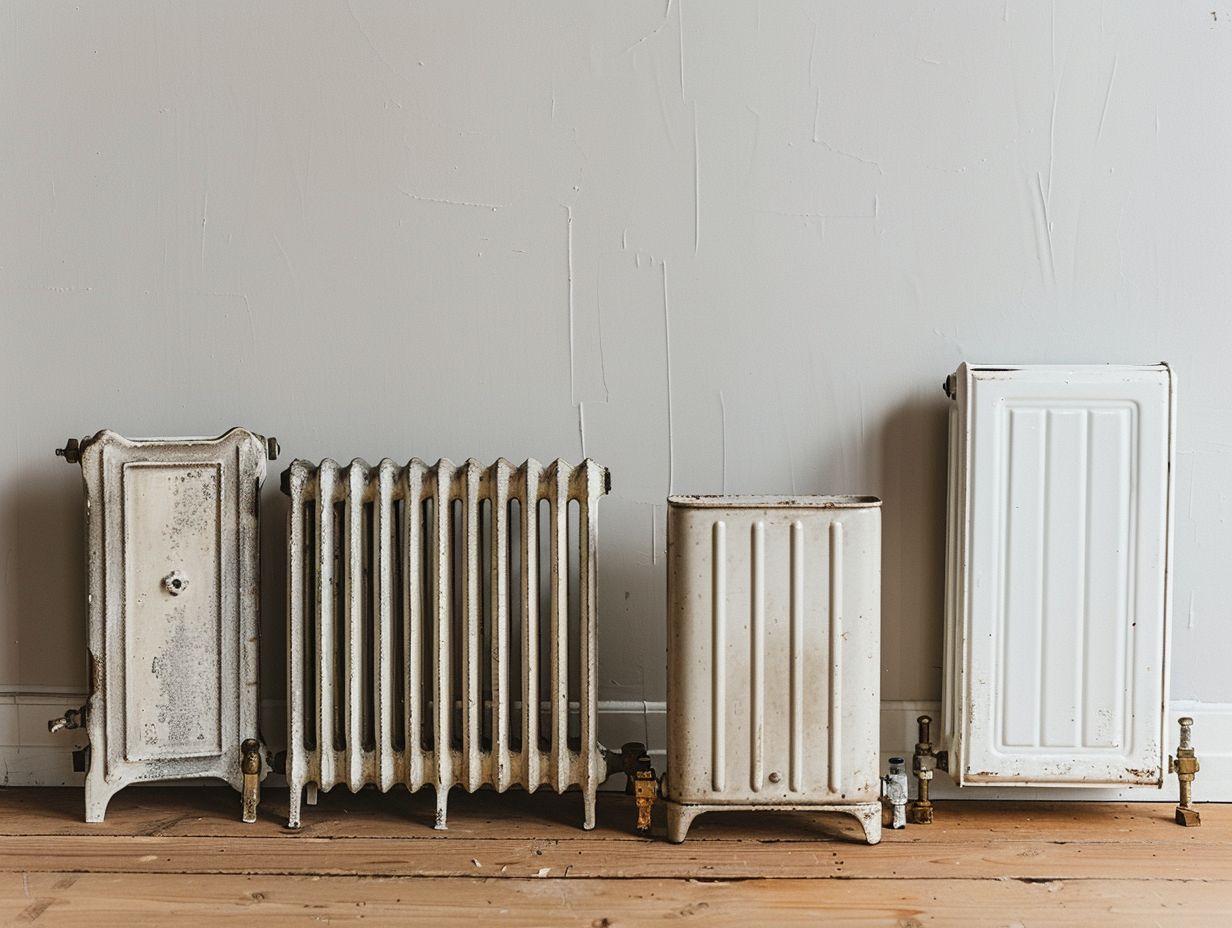
When selecting a type 22 radiator, you should explore customisation options to align with your room dimensions, address heat loss concerns, enhance energy efficiency, and optimise pipe sizing and radiator valve selection.
Personalising your radiator choice has the potential to improve both the aesthetic appeal and functional performance of your heating system.
Consider various design variations such as colours, finishes, and styles to create a radiator that seamlessly complements your room decor. Some type 22 radiators may offer energy-saving features like built-in thermostatic controls or programmable settings, aiding in more efficient heat regulation.
Ensuring proper pipe sizing is key to the radiator’s ability to deliver adequate warmth effectively. Additionally, selecting the appropriate radiator valves enables precise temperature control in different zones of your home.
Expert Recommendations and Tips
Seeking expert recommendations and tips for selecting and optimising type 22 radiators can significantly impact your heating system’s performance.
You can benefit from the insights provided by experts on heat distribution, air circulation, space utilization, energy-saving measures, and effective pipe sizing strategies. By following expert advice, you can reduce heating bills and enhance overall energy efficiency.
Implementing proper heat management techniques is crucial for maximising the efficiency of type 22 radiators. It is important to ensure that radiators are not obstructed by furniture or curtains to improve heat distribution throughout the room.
Optimising airflow through bleeding air from the system and balancing the radiators can help you maintain a consistent temperature.
Additionally, considering the size of the pipes connecting the radiators to the boiler is essential for efficient heat transfer. Regular maintenance tasks, such as bleeding the radiators and checking for leaks, are necessary to ensure your heating system functions optimally.
Installation and Maintenance Tips
Ensuring proper installation and maintenance of your heating system is essential for achieving optimal performance, energy efficiency, and longevity.
Regular maintenance tasks such as bleeding radiators, inspecting for heat loss issues, and implementing underfloor heating solutions can improve the overall effectiveness of your heating system.
By verifying the correct installation of your heating system, you can prevent potential energy waste and decrease utility expenses. Well-maintained systems operate with greater energy efficiency, resulting in reduced energy costs and a smaller environmental impact.
Regularly bleeding radiators helps eliminate air pockets, enabling hot water to circulate efficiently and evenly throughout your residence.
Additionally, integrating underfloor heating not only delivers consistent warmth but also eliminates the noise and dust associated with traditional heating methods, fostering a more comfortable and healthier living environment.
Proper Installation Techniques
When adopting proper installation techniques for your heating system, you should consider energy-efficient practices, high-quality materials, U values for insulation, effective radiator balancing, and establish regular maintenance schedules. Ensuring the correct installation procedures are followed can optimise your system’s performance and enhance its longevity.
During the installation of a heating system, it is crucial for you to select materials with proper insulating properties to improve energy efficiency. The U value of the insulation significantly impacts heat loss and should be chosen with care.
Radiators play a crucial role in evenly distributing heat throughout the space, so it is essential for you to balance them correctly.
Engaging in regular maintenance activities, such as cleaning filters and checking for leaks, can prevent breakdowns and guarantee that the system operates at peak efficiency. By adhering to these steps, you can establish a comfortable and cost-effective heating environment in your home.
Maintenance and Care for Optimal Performance
Regular maintenance and care are essential for ensuring your heating system operates at its peak performance level.
By addressing issues related to heat distribution, air circulation, space optimization, heating bills management, and energy efficiency enhancements, you can prolong the lifespan of your system and reduce overall heating costs.
Proper maintenance practices involve you regularly checking and cleaning air filters to ensure optimal air circulation throughout your home or building. It’s also important for you to inspect the ductwork for any leaks or obstructions that may hinder the flow of warm air.
Implementing space utilization strategies such as arranging furniture to allow for better heat distribution can help improve the efficiency of your heating system.
Considering energy-efficient measures like programmable thermostats and sealing gaps around doors and windows can further contribute to reducing energy consumption and enhancing the overall performance of your system.
Frequently Asked Questions
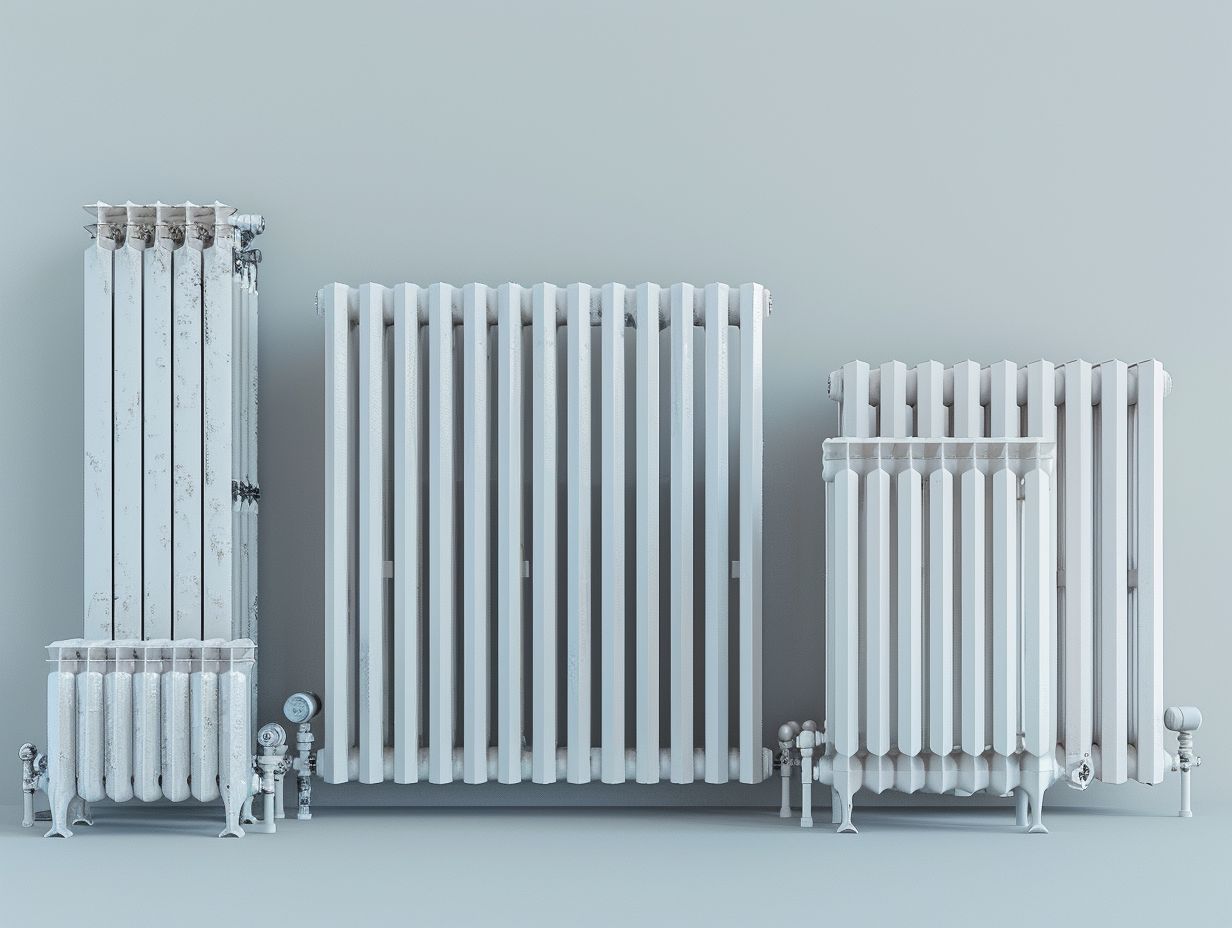
1. What factors should I consider when choosing the right size Type 22 radiator?
When choosing the right size Type 22 radiator, you should consider the size of the room, the heat output required, and the available space for installation.
2. How do I determine the heat output required for my Type 22 radiator?
The heat output required for your Type 22 radiator can be determined by calculating the BTUs (British Thermal Units) needed to heat your room. This calculation takes into account the room dimensions, insulation, and heat loss.
3. What is the recommended size for a Type 22 radiator in a standard sized room?
For a standard sized room (approximately 150 square feet), a Type 22 radiator with a heat output of 5000-6000 BTUs is recommended.
4. Can I choose a larger or smaller Type 22 radiator than the recommended size for my room?
It is not advisable to choose a larger or smaller Type 22 radiator than the recommended size for your room. A larger radiator may overheat the room, while a smaller radiator may not provide enough heat.
5. Should I consider the style and design of the Type 22 radiator when choosing the size?
Yes, the style and design of the Type 22 radiator should also be considered when choosing the size. Make sure the radiator fits in with the overall aesthetic of the room and complements the decor.
6. Can I seek professional advice for choosing the right size Type 22 radiator?
Yes, it is always recommended to seek professional advice when choosing the right size Type 22 radiator. Professional heating engineers can accurately calculate the heat output required and help you choose the best radiator for your specific needs.

